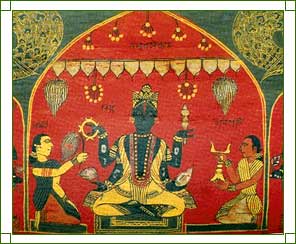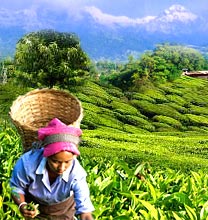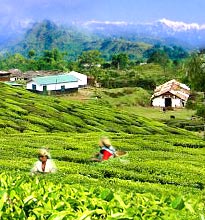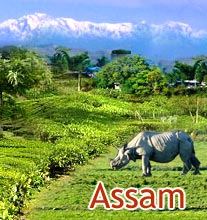 The traditional paintings of Assam serve as a source of inspiration to thousands of art lovers across the globe. Known for their unmatched quality and outstanding strokes of mastery, they have become an integral part of the rich Assamese culture and heritage. Tracing their origin to seventh century AD, Assamese paintings and manuscripts are said to have been derived from the mythological tales, the most prominent among which are Chitra Bhagavata and Hastividyaranya. Most of these manuscripts have been collected from different parts of the state and published in the form of books, along with the reproduction in the form of paintings. However, the illustrations in these manuscripts are a bit too refined to be categorized as folk paintings.
The traditional paintings of Assam serve as a source of inspiration to thousands of art lovers across the globe. Known for their unmatched quality and outstanding strokes of mastery, they have become an integral part of the rich Assamese culture and heritage. Tracing their origin to seventh century AD, Assamese paintings and manuscripts are said to have been derived from the mythological tales, the most prominent among which are Chitra Bhagavata and Hastividyaranya. Most of these manuscripts have been collected from different parts of the state and published in the form of books, along with the reproduction in the form of paintings. However, the illustrations in these manuscripts are a bit too refined to be categorized as folk paintings.There are a number of Assamese scripts, where the folk connection is established to a high degree as well. In medieval Assam, different classes of painters evolved with time. There was a special class called patuas, whose paintings were called pats. Pats were independent of votive structure, i.e., they were not part of an own stake. Then, there were the painters known as nats, who were professional singers and dancers. However, the most versatile among all the Assamese painters were the khanikars. Their work mainly centered on the satras or monasteries and the naam-ghars. Known for their excellent artistic creations, some khanikars can still be found in certain villages of Upper Assam.
Some of the manuscripts on which Assamese paintings are based have been preserved in the Assam State Museum, Kamarupa Anusandhan San-dty and the Historical and Antiquarian Department. Some others are in the hands of private collectors. Besides these, the Assam Fine Arts and Crafts Society (Guwahati) and Jorhat Fine Art Society have been playing a significant role in preserving the rich cultural heritage of the state. Records of the traditional paintings have also been done in the famous Assam silk. It is said that during the visit of Hiuen Tsang and Harshavardhana to the state, the king of Kamrupa, Kumar Bhaskara, presented them with elusive Assamese silk paintings.
Schools Of Painting
Broadly, the paintings of Assam can be categorized under two headings or schools - Assam School and Tai-Ahom School. Let us explore them in detail.
Assam School
Assam School can be further subdivided into Sattriya and Royal styles. Sattriya style was mainly propagated by Sri Sankaradeva. Beautiful illustrations of this style can still be found in certain manuscripts of the region, like the Citra Bhagavat (1539 AD). In addition to the local Assamese tradition and traits, Mughal, Rajput and Pahari influence can be seen in these paintings.
There is a fine portrayal of local animal life, like lion and bison, apart from pictures of trees with flowers and birds. Such charming illustrations definitely attract the attention of the onlookers and students. The Royal style, on the other hand, developed two more styles namely, Garhagaon and Darrang styles.
Tai- Ahom School
Tai- Ahom School is mainly represented by the Phung Chin manuscript and Suktanta Kyempong. The Phung Chin manuscript shows illustrations of 16 heavens and 16 hells, while the latter deals with Lokadharma.











